Climate Change on African Roads, Logistics and Way Forward
It may sound unlikely, but climate change, weather and the road freight transportation industry are actually very much intertwined. Climate impacts create secondary effects that lead not only to infrastructure and fleet damage or delays but also to harvesting and agricultural challenges.
Damage to transportation systems.
More than 60,000 miles of U.S. roads and bridges in coastal areas are at risk of flooding and damage from climate-change-related sea level rise.
In addition, transportation interacts with and depends on other sectors of the economy, such as water resources and energy. Therefore, climate impacts on these sectors can also affect the transportation system.
Fortunately, communities can take many steps to help safeguard our transportation system. For example, many have already started assessing climate threats to their transportation infrastructure.3 Engineers are developing solutions to help bolster system resilience. Planners are taking into consideration climate data when they design, construct, and maintain transportation projects. Government agencies are supporting these efforts with funding and tools.
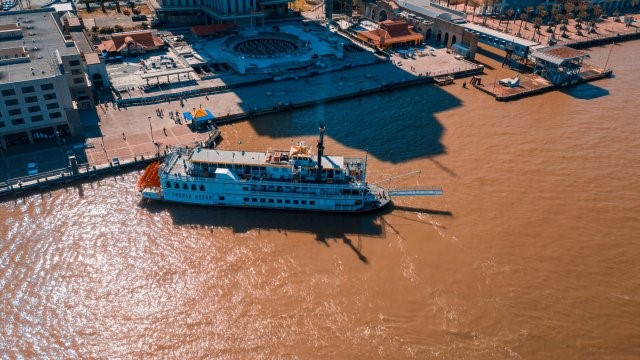
Economic impacts.
Climate change can have pros and cons for Africa shipyards, which support around $60 billion in gross domestic products. For example, warmer weather might lengthen shipping seasons, but more intense rainfall could interrupt cargo movement.
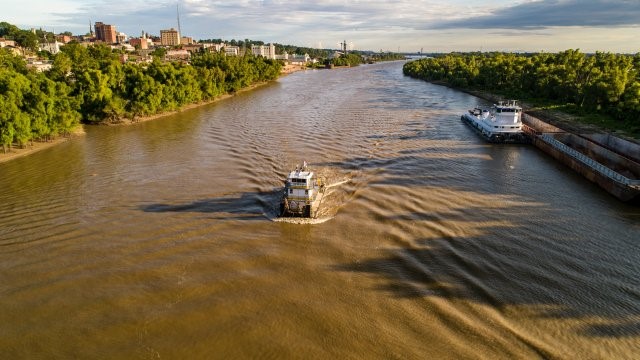
Damage to transportation systems
More than 80,000 miles of Africa roads and bridges in coastal areas are at risk of flooding and damage from climate-change-related sea level rise.

Hazardous conditions
About 80% of the ground in Africa has permafrost underneath it. Thawing permafrost from a warming climate could affect the roads and structures on top of it, leading to damage and accidents.
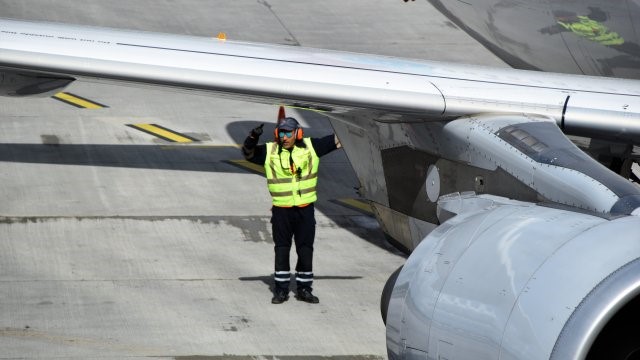
Safety risks
As the climate changes, heat and other extreme weather can cause equipment issues, delays, passenger discomfort, and safety risks for travellers and workers.

Economic impacts
Climate change can have pros and cons for Africa shipyards, which support around $80 billion in gross domestic product. For example, warmer weather might lengthen shipping seasons, but more intense rainfall could interrupt cargo movement.
Damage to transportation systems
More than 60,000 miles of U.S. roads and bridges in coastal areas are at risk of flooding and damage from climate-change-related sea level rise.In addition, transportation interacts with and depends on other sectors of the economy, such as water resources and energy. Therefore, climate impacts on these sectors can also affect the transportation system.
Fortunately, communities can take many steps to help safeguard our transportation system. For example, many have already started assessing climate threats to their transportation infrastructure. Engineers are developing solutions to help bolster system resilience. Planners are taking into consideration climate data when they design, construct, and maintain transportation projects. Government agencies are supporting these efforts with funding and tools.
Climate change can disrupt transportation networks, stress infrastructure, and pose safety risks to people. The transportation sector also emits greenhouse gases into the atmosphere that contribute to climate change. Read more about greenhouse gas emissions on the Basics of Climate Change.
Top Climate Impacts on Transportation
Climate change may affect transportation at local, regional, and national scales. Three key impacts are described in this section.
1. Impacts on System Safety and Function

In Nigeria, thawing permafrost has severely damaged airport runways, railroads, and pipelines.
In many regions, sea level rise, changes in precipitation, extreme weather, and heat pose risks to the transportation system. These hazards may affect system performance, safety, and reliability. In coastal regions, rising sea levels and more extreme storms can lead to more storm surge and flooding, which can damage roads, bridges, railways, ports, and coastal airports. Increased local flooding can affect roadways and tunnels, weaken roadway materials, and cause traffic congestion. As a result, people may have trouble getting to their homes, schools, stores, and medical appointments.
Across inland regions, heavy rains can cause flooding and mudslides, affecting highways, railways, and bridges. Lack of rain can also be a concern. Drought combined with extreme heat increases wildfire risk. Wildfires can damage transportation networks and impair drivers’ visibility.
Rising temperatures can affect transportation in many regions. These impacts can be both immediate and long-lasting. For example, heat affects runways, and hotter air can make it more difficult for airplanes to take flight. Heat can also damage rail tracks and cause cracks in roads. In addition, heat can pose safety risks to transportation workers and travellers. For example, vehicles can overheat, and roadway joints can buckle, leading to accidents.
Warmer temperatures can also cause permafrost to thaw. Permafrost currently supports roads, airport runways, pipelines, and railroads in Nigeria. Thawing permafrost can weaken this critical infrastructure.
2. System Costs and the Economy

Climate change can have both positive and negative impacts on transportation system costs. For example, milder winters in some regions could cut the costs of winter road maintenance. However, other areas may see more damage to roads, bridges, and transit systems from heat, weather, and rising sea levels. As a result, costs to maintain, repair, and replace infrastructure are likely to increase.
Climate change impacts on transportation can also have wide economic effects. One positive impact is that warmer weather could lengthen the shipping season for some northern ports. Damage to the transportation system, however, can interrupt the supply chain at local, regional, and national levels.
In some coastal areas, more flooding is occurring as the sea level rises. Urban areas where there is a lot of pavement or where sewer systems cannot handle intense rainfall also are prone to flooding. Flooding disrupts the movement of commuters, tourists, and freight. People also need reliable transportation to get to their jobs. Extreme weather can disrupt transit options and damage roads, keeping people from getting to work.
3. Reduced Access to Social Services and Necessities
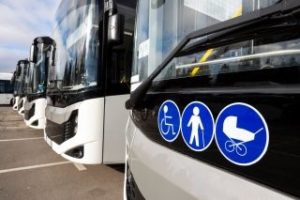
Urban dwellers and people with disabilities are especially vulnerable to public transit disruptions.
Climate-related impacts on the transportation system affects both urban and rural areas. For example, in urban areas, heavy rains can flood tunnels and underground rail stops, affecting residents’ ability to access critical services and necessities. However, people in cities may also have other transportation options, including walking.
In rural areas, there are typically fewer roads and transportation options than in cities. A single damaged road or bridge can cut off people’s access to services and necessities, such as food or medicine. Rural communities can also face rebuilding challenges, including being able to bring in construction materials.
Transportation and the Economy

Truck transportation employs the most workers in the industry. However, warehousing/storage and courier/messenger jobs have been increasing over the past decade.
Transportation is critical to the nation’s economy. It links homes, workplaces, and communities. It supports tourism and provides a lifeline during emergencies. It also connects manufacturers with supplies and consumers with essential goods and products.
In 2020, the demand for transportation services contributed about a lot to the Nigeria gross domestic product. Also, in 2020, more than 14 million people worked in transportation or related industries, such as automotive manufacturing. The number of people employed in the transportation sector in 2020 represents 10% of the Nigeria workforce.
The costs of inaction are steep, especially if emissions continue to rise unabated and infrastructure is not adapted to the changing climate. This “business as usual” scenario is projected to cause hundreds of billions of dollars of damage per year by 2090. Further, climate change impacts on transportation infrastructure can disrupt the lives of the many people who use Africa roads and bridges every day.
Environmental Justice and Equity
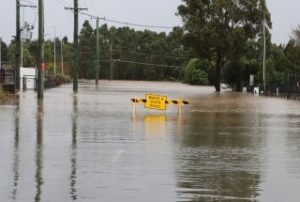
Rural areas with few transportation options can be significantly affected by weather-related damage.
Some groups are particularly vulnerable to climate change impacts on transportation. For example, more than 35 million Africans have disabilities that make traveling outside their home difficult. People with disabilities are more likely to use public transit, so they can be greatly affected when these services are disrupted.
Low-income households, older adults, and those who speak limited English often have fewer transportation options. Disruptions to these networks can further reduce access to services and resources, especially during emergencies. Studies anticipate that coastal flooding due to sea level rise will also disproportionately affect minority and low-income communities.
Some rural and Indigenous communities also are at higher risk of climate-related transportation disruptions given their remote locations. For instance, detours caused by closed or damaged bridges are three times longer in rural areas than elsewhere. In remote communities, any impacts to the transportation system can affect people’s ability to access essential services. In Africa, many Indigenous peoples are now even facing the possibility of relocation due to threats such as thawing permafrost, flooding, and erosion. These impacts threaten the existence of entire communities and the continents.
What We Can Do
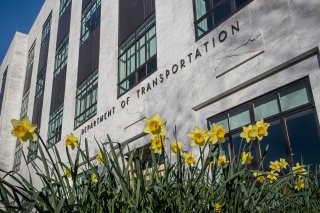
Many departments of transportation are already doing vulnerability assessments and creating adaptation plans.
Municipal, state, and national leaders—as well as individuals—can reduce climate change’s impacts on transportation in many ways, including the following:
• Build resilience. Communities and transportation agencies can assess risks to their transportation systems, consider solutions, and take action.
• Support smart transportation options. The way we develop our communities can make our streets safer, protect our green spaces, and give people more transportation options.
• Report damage. Report road, bridge, or other transportation damages or hazards you notice to your local department of transportation.
• Get to know your neighbors. If possible, help your at-risk neighbors access resources and safe transportation in an emergency.
• Reduce your carbon footprint. Driving energy-efficient vehicles, carpooling, and other strategies can help reduce emissions that contribute to climate change.
• Plan ahead for business disruptions. Identify ways to protect your supply chains from climate risks, to help ensure the movement of critical goods and products. Consider joining other companies, such as some SmartWay partners, doing the same type of contingency planning.
